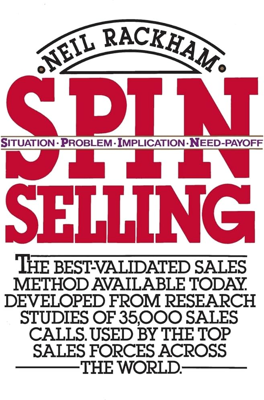The SPIN Strategy
The SPIN Strategy
The SPIN model is designed to help salespeople uncover and develop customer needs more effectively, structured around four types of questions:
Situation Questions are fact-finding questions about the customer’s current context which are not positively related to sales success. Experienced salespeople use them sparingly because they can bore the buyer if overused. They are necessary but should be focused and not overdone.
Problem Questions aim to uncover customer problems, difficulties, or dissatisfactions. While these questions are linked to sales success more than Situation Questions, especially in smaller sales, their effectiveness diminishes in larger, complex sales. Experienced sales professionals tend to replace Situation Questions with Problem Questions as they gain experience.
Implication Questions enhance the seriousness of the problems identified through Problem Questions. They transform Implied Needs into more pressing problems, making them actionable. Their strategic use increases the perceived size of a problem, justifying larger, more costly solutions.
Need-payoff Questions focus on the positive outcomes and benefits of solving the identified problems. These questions encourage customers to articulate the benefits, inherently creating a more constructive and solution-focused dialogue. They help in building customer agreement on the value of a proposed solution.
The transition through these questions should be seamless but adaptable to the conversation's flow, avoiding mechanical or overly formulaic approaches. Effective sales calls often use fewer Situation Questions and focus more on Problem, Implication, and Need-payoff Questions to create a customer-centric, problem-solving dynamic that enhances the likelihood of a sale.
SPIN Questions Usage and Tactics:
Effective Utilization: Start with identifying potential customer problems your product or service can solve. Writing down possible Problem Questions before a call can help focus the dialogue.
Planning Implication Questions: These should be planned based on potential difficulties arising from a customer’s problems, aiming to highlight the seriousness and larger consequences of these issues.
Effective Timing for Need-payoff Questions: These should be employed after establishing the customer’s needs and problems, ensuring they are used to maximize positive reinforcement of how solving these problems can be beneficial, rather than early in the call which can seem presumptive or pushy.
By thoughtfully integrating these SPIN questions into sales conversations, salespeople can effectively uncover explicit needs, understand the actual scale of these needs, and guide the conversation towards a sale that feels beneficial and necessary from the customer’s perspective.
